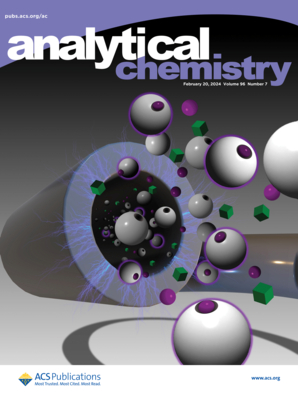Untangling the Postmortem Metabolome: A Machine Learning Approach for Accurate PMI Estimation.
IF 6.7
1区 化学
Q1 CHEMISTRY, ANALYTICAL
引用次数: 0
Abstract
Accurate estimation of the postmortem interval (PMI) is crucial for medico-legal investigations, providing critical timelines for criminal cases. Current PMI methods, however, often lack precision, limiting their forensic utility. In this study, we developed models to estimate PMI with high accuracy across various tissues within the first 4 days after death. Using untargeted UHPLC-qTOF-MS, we analyzed thousands of molecules in rat tissues with different PMIs. We employed machine learning on stable and highly reproducible molecules in each tissue to select candidate biomarkers and then built a second model using only the top 15 molecules. Both Lasso and Random Forest approaches yielded high cross-validation accuracy across all tissues, with the latter showing slightly superior performance. Validation was conducted using an independently collected and analyzed set of rats. The identified metabolites, including amino acids, derivatives, nucleosides, and other markers, are common to humans and mammals, underscoring their potential applicability in human forensic contexts. Our findings highlight the tissue-specific predictive potential and variability in predictive accuracy across different tissues in a rodent model.解开死后代谢组:一种用于准确PMI估计的机器学习方法。
准确估计死亡时间间隔(PMI)对法医调查至关重要,为刑事案件提供关键的时间线。然而,目前的PMI方法往往缺乏准确性,限制了它们的取证效用。在这项研究中,我们开发了模型来估计死亡后4天内各种组织的PMI具有很高的准确性。使用非靶向UHPLC-qTOF-MS,我们分析了具有不同pmi的大鼠组织中的数千种分子。我们对每个组织中稳定且高度可复制的分子使用机器学习来选择候选生物标志物,然后仅使用前15个分子构建第二个模型。套索和随机森林方法在所有组织中都产生了很高的交叉验证精度,后者表现出稍好的性能。使用独立收集和分析的一组大鼠进行验证。鉴定的代谢物,包括氨基酸、衍生物、核苷和其他标记物,在人类和哺乳动物中是常见的,强调了它们在人类法医环境中的潜在适用性。我们的研究结果强调了在啮齿动物模型中不同组织的预测准确性的组织特异性预测潜力和可变性。
本文章由计算机程序翻译,如有差异,请以英文原文为准。
求助全文
约1分钟内获得全文
求助全文
来源期刊

Analytical Chemistry
化学-分析化学
CiteScore
12.10
自引率
12.20%
发文量
1949
审稿时长
1.4 months
期刊介绍:
Analytical Chemistry, a peer-reviewed research journal, focuses on disseminating new and original knowledge across all branches of analytical chemistry. Fundamental articles may explore general principles of chemical measurement science and need not directly address existing or potential analytical methodology. They can be entirely theoretical or report experimental results. Contributions may cover various phases of analytical operations, including sampling, bioanalysis, electrochemistry, mass spectrometry, microscale and nanoscale systems, environmental analysis, separations, spectroscopy, chemical reactions and selectivity, instrumentation, imaging, surface analysis, and data processing. Papers discussing known analytical methods should present a significant, original application of the method, a notable improvement, or results on an important analyte.
 求助内容:
求助内容: 应助结果提醒方式:
应助结果提醒方式:


